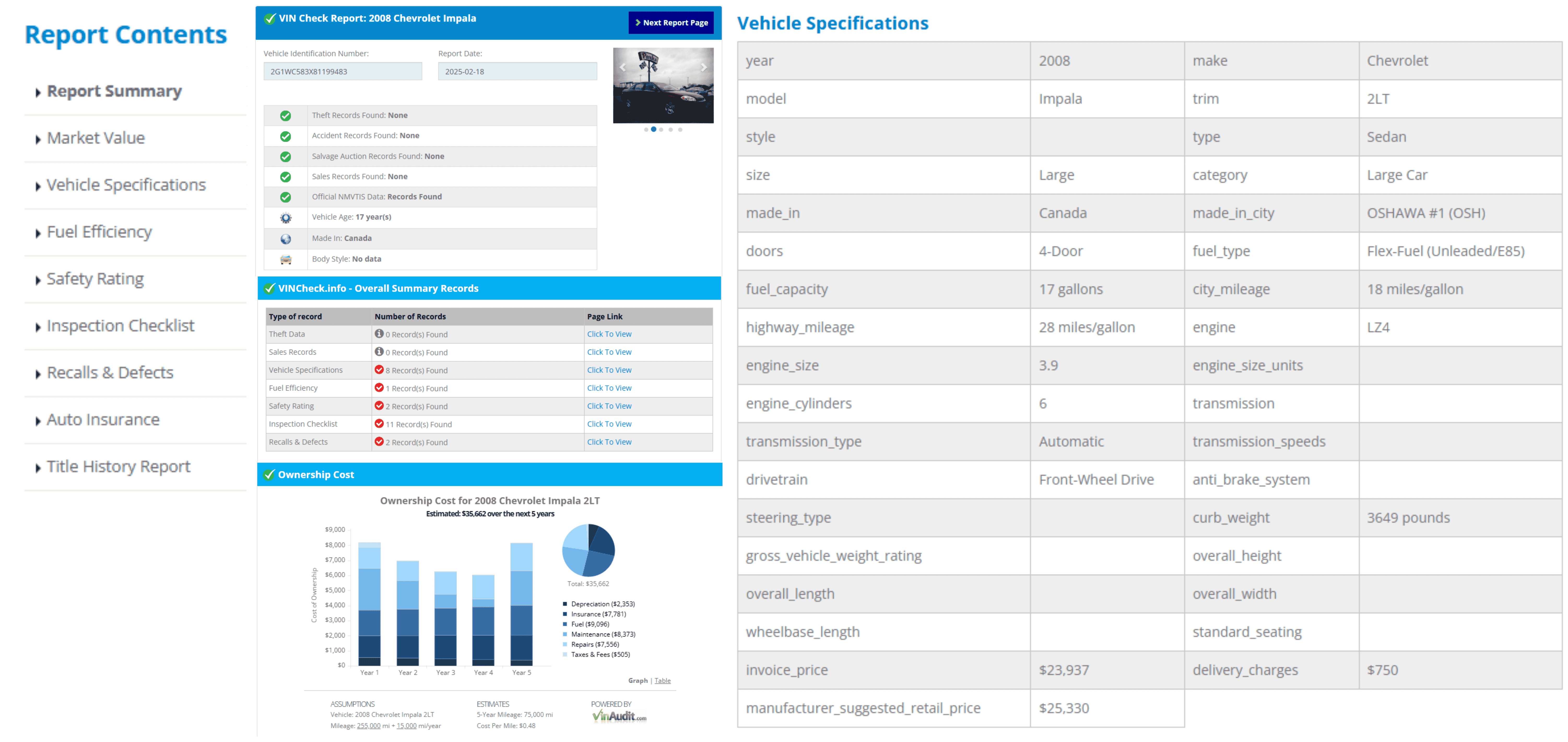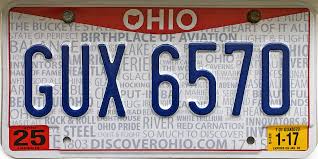Ohio License Plate Lookup – Free OH Tag Search & Vehicle History Check
Why Run an Ohio License Plate Lookup?
If you’re buying a used car in Ohio or want to confirm a vehicle’s safety and legality, an Ohio license plate lookup is your go-to tool. In just seconds, you can uncover valuable details about a car’s history—free and without needing the VIN.
An Ohio plate lookup, sometimes called an Ohio tag lookup, helps you:
- Verify a vehicle’s title status
- Check for reported accidents or flood damage
- Confirm odometer readings
- Detect potential theft or liens
Whether you’re about to purchase a vehicle, checking your own records, or researching for peace of mind, our 100% FREE Ohio Plate Lookup makes the process simple and secure.
What Can You Find with an Ohio License Plate Lookup?
A license plate lookup Ohio provides access to:
- Vehicle Details: year, make/model, body/engine, VIN (when available)
- Title Status & Brands: clean, salvage, rebuilt, flood, lemon buyback
- Accident & Damage Events: severity, airbag deployment, total loss
- Use Type & Sales Events: personal, rental, fleet; auction/sales records
- Theft & Lien Checks: active theft reports; existing liens
- Odometer: rollbacks, inconsistent readings
- Recalls & Safety: open safety recalls and fixes needed
- Market Value: comps and typical price range
Sample Vehicle History Report

Ohio License Plate Types & Serial Formats

Ohio offers many plate styles, each with its own serial format:
- Standard Plates – Three letters + four numbers (e.g., ABC 1234) for everyday passenger vehicles.
- Personalized (Vanity) Plates – Custom letter/number combinations that follow state guidelines.
- Organizational Plates – For clubs, charities, and professional groups.
- Collegiate Plates – Featuring Ohio college colors and logos.
- Sports Team Plates – Pro and college sports team designs for fans.
How to Use Our Free Ohio License Plate Search
It’s fast, simple, and completely free:
- Type the Plate Number – Enter the exact license plate number from the vehicle.
- Click “Search Plate” – Our system instantly scans available records.
- View Vehicle Details – See history, title info, and more in seconds.
📌 Tip: No plate number? Use our Ohio VIN Check to access the vehicle’s complete background.
Is It Legal to Look Up License Plates in Ohio?
Yes — as long as you don’t attempt to retrieve Ohio license plate lookup owner information without authorization. The DPPA strictly limits access to private data, but vehicle history details such as title brands, accident history, and usage type remain accessible for permissible purposes like:
- Buying or selling a car
- Verifying vehicle condition
- Researching recalls or safety issues
A legal Ohio license plate search can help you make an informed decision without crossing privacy lines.
Ohio Vehicle Registration & Title Requirements
If you’re buying a used car, moving to Ohio, or replacing your plates, you must follow BMV rules. Here’s what you’ll need to register a vehicle:
- Proof of ownership – Ohio title or Manufacturer’s Certificate of Origin (MCO)
- Completed registration form – available at BMV offices
- Valid Ohio ID – driver’s license or state ID card
- Emissions test (if required) – for certain counties like Cuyahoga, Geauga, Lake, Lorain, Medina, Portage, and Summit
- Vehicle inspection – for rebuilt or out-of-state vehicles
- Proof of insurance – meeting Ohio’s minimum coverage requirements
- Payment – fees vary based on vehicle age, weight, and type
- Previous registration – if transferring from another state
- Biennial testing – for vehicles under 26 years old in certain counties
You have 30 days to register after moving to Ohio or buying a new vehicle.
Don’t Forget About Renewals
In Ohio, vehicle registration usually expires once a year, on the primary owner’s birthday. A few weeks before that, the Ohio BMV sends a renewal notice.
- You can renew registration up to 90 days in advance
- Renewal can be done online, by mail, or in person at your local Ohio BMV office
- Late renewals may result in penalties and fines
How to Title a Newly Purchased Vehicle
If you’ve bought a car from a private seller, you must title it before registration:
- Have the seller sign and notarize the title.
- Visit your county’s Clerk of Courts Title Office to apply for a new title.
- Bring a valid ID and proof of purchase (bill of sale).
- Pay the title fees and taxes.
Buying from out-of-state? You’ll also need a VIN inspection at a BMV deputy registrar or licensed dealer. Once titled, run an Ohio license plate search to confirm your vehicle’s record matches your paperwork.
Transferring or Replacing License Plates
Plate Transfer
- You can transfer old plates to your new vehicle during the title process.
- Submit a plate transfer request at your local Ohio BMV.
- Fee: $6.00.
Plate Replacement
If your plates are lost, stolen, or damaged:
- Visit a local BMV office or use the Ohio BMV online portal.
- Bring proper identification.
- Fee: $12.00 (single) or $13.25 (pair).
- Want to keep the same plate number? Add $10.00.
Personalized & Specialty Plates
Ohio offers custom license plates for personal interests, organizations, and causes.
- Fees vary based on design and are added to your annual registration fee.
Browse options on the official Ohio BMV website.
Ohio BMV Services & Seven Hills Ohio Tag Lookup
You can use the Ohio plate checker in any Ohio BMV office to confirm registration details, check for title issues, and make sure your records match before you arrive.
Seven Hills BMV Contact Info:
If you need in-person service, here’s the Seven Hills BMV contact info:
📍 Address: 10948 Hamilton Ave, Cincinnati, OH 45231
📞 Phone: (844) OHIOBMV (844-644-6268)
🕒 Hours:
- Mon–Fri: 8:00 AM – 5:00 PM
- Saturday: 8:00 AM – 2:00 PM
- Sunday: Closed
Final Tip
Don’t buy a used car in Ohio without running a quick and free Ohio license plate lookup. It’s one of the easiest ways to protect your wallet and stay safe on the road. Whether you’re doing an Ohio license plate search for peace of mind or using a license plate lookup Ohio to double-check paperwork, the right tools are just a click away.
Yes. Ohio license plate lookup is legal when conducted in compliance with the Driver’s Privacy Protection Act (DPPA). You can use it to access vehicle history, title status, and other non-personal details, but you cannot obtain the owner’s personal information without proper legal authorization.
Yes. You can perform a free Ohio license plate lookup using VinCheck.info without creating an account or paying a fee. The report can include title records, accident history, odometer readings, and other key details to help you make informed decisions.
While Ohio law restricts access to personal names and contact details, an Ohio vehicle lookup can still reveal the number of previous owners, the dates of ownership transfers, and related title information, helping you assess the car’s background.
VinCheck.info is one of the best options for a free Ohio tag lookup. It uses trusted data sources like NMVTIS, law enforcement, and industry partners to provide accurate title, brand, theft, and accident information.
Yes. A license plate lookup in Ohio can reveal accident records linked to that plate or the vehicle’s VIN. This includes reported collisions, damage events, and other incidents that may affect the vehicle’s value and safety.
You can check for active liens on an Ohio vehicle by running a license plate lookup or VIN check through trusted services like VinCheck.info. The report may show whether the vehicle is financed, leased, or has outstanding loans that could affect your ability to register or sell it.
Yes. An Ohio license plate lookup can reveal if the vehicle carries a salvage, rebuilt, flood, or other branded title. This information is crucial for spotting cars that have been severely damaged and repaired, which can impact safety and resale value.
